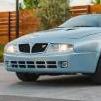BMW Serie 2 Active Tourer 2014
quanto ti piace la BMW Serie 2 Active Tourer 2014?
130 voti
-
1. quanto ti piace la BMW Serie 2 Active Tourer 2014?
-
• Molto11
-
• Abbastanza24
-
• Poco43
-
• Per niente52
-
- Si prega di accedere o registrarsi per votare a questo sondaggio.





.thumb.jpg.902d2a4f20a129e92b6f6920407b81bd.jpg)

















Messaggi Raccomandati:
Crea un account o accedi per lasciare un commento
Devi essere iscritto per commentare e visualizzare le sezioni protette!
Crea un account
Iscriviti nella nostra community. È facile!
Registra un nuovo accountAccedi
Sei già registrato? Accedi qui.
Accedi Ora